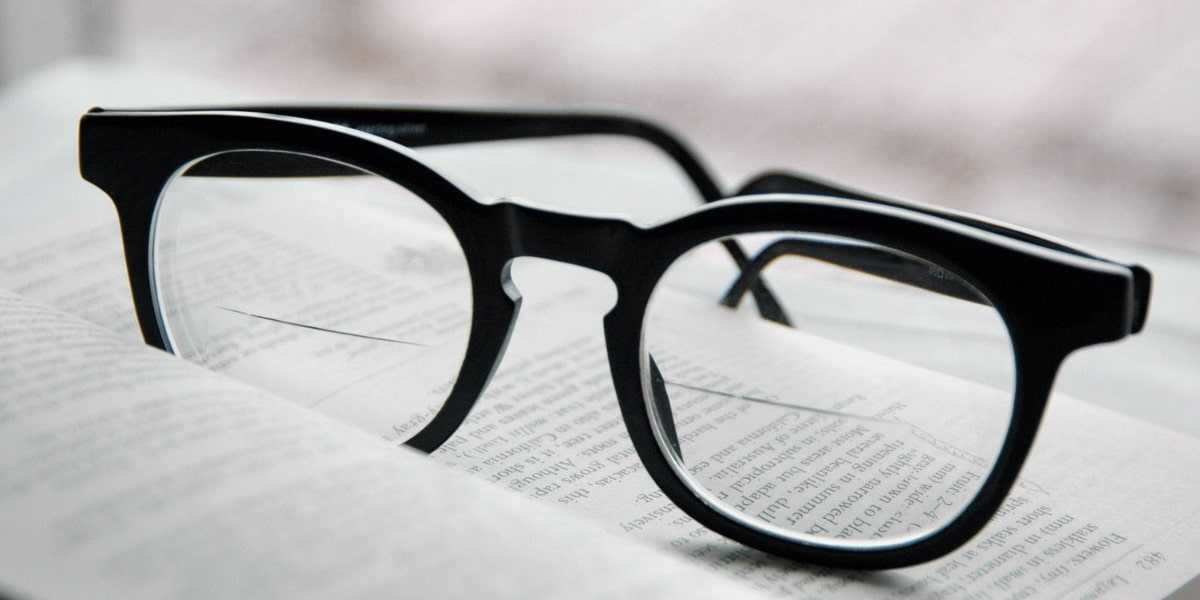How do bifocal lenses work?
You can actually infer quite a bit from its name – the word ‘bi’ means ‘two’, while ‘focal’ refers to the focus of the lens.
The lower portion of the lens is dedicated to close up work like reading, writing, or looking at our phones, as we tend to look downward when doing these tasks. On the other hand, the outer region of the lens is designed for distance vision, such as reading road signs, watching a movie, or recognizing a friend that’s waving at you from afar.
Another thing you may have probably noticed about bifocal glasses would probably be the clear demarcation between the near and distance vision segments of the lens.
The demarcations will vary depending on the type of bifocal lens you get, but here at Mouqy, we offer the D segment lens type specifically, simply because it’s one of the easiest bifocal designs for wearers to adapt to.
How do I know if I need bifocal glasses?
There are a few signs that point to a need for bifocals, and the sooner you notice these signs, the better it’ll be for your eyesight. You’ll know it’s time to get bifocal glasses if you experience:
Headaches and eye strain
An obvious indicator would be if you have regular headaches when doing up-close work such as reading or writing. You may also feel a throbbing sensation behind your eyes whenever you focus your eyes on nearby objects for a considerable amount of time.
Changes in vision
Does your eyesight seem perfect when reading in the morning, but not so much in the evening? Then this may be a sign that you need bifocals. Some people use multiple glasses to alleviate this problem, but let’s be real, who wants to keep switching specs throughout the day?
Constantly moving things around to see better
If you frequently hold items at different distances in order to see clearly, then you likely need bifocals. Moving things closer or further away from you all the time just to focus on an object better isn’t just taxing, but can also worsen your eyesight in the long run too.
What are bifocal glasses good for?
Aside from correcting nearsightedness and farsightedness at the same time, bifocal glasses are also helpful for:
Presbyopia
Also known as age-related farsightedness, presbyopia typically occurs in adults starting at the age of 40. This is due to the lens of the eye becoming more rigid over time, which results in difficulty when focusing on nearby objects.
There is unfortunately no cure for presbyopia, as it’s but a natural part of aging. However, bifocals can help wearers cope with their changing vision.
Eyesight problems in children
Bifocals aren’t just for senior folks, but can also help children with various eye concerns, namely:
- AmblyopiaColloquially called lazy eye, amblyopia stems from focusing problems, causing one eye to go out of alignment. And if left unchecked, the eye can turn completely inward and never see well. Thankfully, bifocals can prevent this by helping children’s eyes to focus properly.
- Progressive myopiaStudies have shown that bifocals can also slow down the progression of myopia or nearsightedness in children, as well as reduce blurred vision and fatigue while doing school work.
How long does it take to adjust to bifocals?
Because you’ll have two prescriptions on one lens, it can take a bit of time to get used to compared to single vision lenses. The adjustment period may take up to two weeks, but consistently wearing your glasses can help you get used to them faster.
You may also need to consciously train your eyes to look in the appropriate vision segments when doing everyday tasks too, such as looking at the top portion (or distance vision segment) of the lens when going down the stairs, or looking at the lower portion (or near vision segment) while reading a book.
Which one is better, progressive or bifocal lenses?
The best prescription lenses for you would ultimately depend on your lifestyle. While some people prefer progressive lenses because of the seamless transition between the near, middle, and distance vision segments, others prefer bifocals as the demarcations let them know where exactly to look depending on the task at hand.
Those who do a lot of reading and writing may prefer bifocals as well since they offer a much larger vision segment for up-close work. But, if you’re someone who works on a desktop or laptop for long hours, then progressive lenses will be a more suitable choice, as they’re better suited for intermediate distances.
The demarcations in bifocal lenses can either be a pro or a con depending on your personal preferences too. Some people don’t like the look of bifocals because of the obvious line separating the two prescriptions, while others prefer it since it allows them to easily switch from one zone to the other. Bifocals are also generally easier to adapt to because of this feature, whereas progressives usually take longer to get used to.
Oh, and another thing, bifocals are typically cheaper than progressives too, which is something you may want to take note of if you’re on a budget. Luckily, we at Mouqy carry a wide range of functional lenses and quality frames at affordable prices, so you can customize your glasses to your specific needs and preferences without breaking the bank.





























































